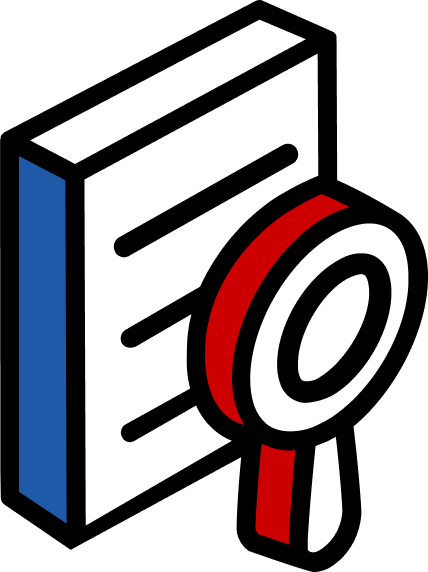Content Outline
Beyond SEO: Generative Engine Optimization (GEO) Strategy Guide for SEA B2B Marketers

Sarah, a Regional Marketing Director for a B2B fintech company in Singapore, opens her Monday morning dashboard to a jarring discovery. When she asks ChatGPT "What are the top digital payment platforms for Southeast Asian businesses?", her biggest competitor appears in the top three recommendations. Her company—despite years of SEO investment and market leadership—doesn't get mentioned at all.
The data tells a stark story. 68% of APAC business buyers now use generative AI to research vendors¹, while Google's search market share fell below 90% for the first time since 2015—driven largely by Asia-Pacific markets². When Google displays AI summaries, users click organic results only 8% of the time versus 15% without AI summaries³. Just 1% of searches with AI overviews result in clicks within the summary itself⁴.
Sound familiar? You're not alone in discovering this blind spot.
While traditional SEO focused on ranking in Google's top 10 results, the new reality is more complex. 300 million people use ChatGPT weekly, sending over 1 billion daily queries⁵, while Perplexity AI handles 780 million queries monthly with 20% month-on-month growth⁶. For B2B marketers in Southeast Asia's diverse, multi-language markets, this shift represents both an existential threat and an unprecedented opportunity.
The Fundamental Shift: From Search to Conversation
The buyer journey has fundamentally changed. Yesterday's linear path—Google search → website visit → form fill—has been replaced by something far more complex and AI-mediated.
B2B buyers now ask ChatGPT questions like: "Who are the top providers of cloud security solutions in Malaysia?" and receive comprehensive vendor lists without visiting a single website. AI-augmented buyers are compressing months of research into weeks, moving through discovery and consideration stages faster than traditional research methods⁷.

The trust factor is real. 38% of B2B buyers trust generative AI platforms for solution assessment, while 34% trust AI advice for vendor shortlisting⁸. This isn't a future trend—it's happening now, driven primarily by decision-makers under 45 who prefer self-service research over vendor sales calls⁹.
But what's really troubling is that when AI tools provide answers, they're not just summarizing—they're recommending. AI suggestions led to a 436% spike in conversions for certain marketing offers¹⁰. When AI recommends, buyers act.
So here's the critical question: what happens to your content strategy when buyers never reach your website? The answer is creating the content strategy crisis most B2B marketers haven't grasped yet.
The Content Strategy Earthquake
The shift from Google-first to AI-first search has created a content strategy crisis that most B2B marketers haven't fully grasped yet.
The Death of Awareness Content
Traditional awareness content—the "how to" guides and "what is" articles that drove organic traffic for years—is rapidly losing value. News publishers lost organic traffic from 2.3 billion to under 1.7 billion visits in one year due to AI overviews driving zero-click rates from 56% to 69%¹¹.
The old playbook was simple: publish informational content to capture search TAM, focus on quantity to drive demand. That playbook is broken.
ChatGPT can instantly answer "How to implement multi-factor authentication" or "What is API security?" without sending users to your carefully crafted blog posts. The traffic that once flowed to these awareness pieces is simply evaporating.
The AI-Proof Content Framework
The new strategic imperative is clear: publish AI-proof content to win shrinking search TAM, focusing on quality to outcompete other websites.
Content now falls into three categories:
High-risk content that AI easily summarizes—basic how-to guides, definition articles, simple comparisons. Traffic from these queries is disappearing fast.
Moderate-risk content with complex questions that have no single right answer. These can still drive traffic if optimized properly for AI citation.
AI-proof content that requires human interaction, cultural context, or real-time data that AI cannot easily replicate or summarize, such as online assessments and interactive tools.

The performance gap is striking. Interactive content generates 53% more engagement than static content¹², while companies implementing comprehensive interactive strategies see 2-6X improvements in key metrics including traffic, conversions, and lead quality.
The Early-Mover Opportunity
We're witnessing a shift as significant as the early days of SEO. AI answer engines could capture 1% of search market share by 2025, with even greater impact in specific B2B niches¹³.
The opportunity is particularly pronounced in APAC markets. While 81% of B2B marketers use generative AI tools, only 19% have integrated AI into daily workflows¹⁴—most are still experimenting rather than optimizing. This creates a massive first-mover advantage for companies that master Generative Engine Optimization (GEO) now.
Consider the citation economy: being mentioned by AI isn't just visibility—it's endorsement. When ChatGPT recommends your solution, conversion rates spike dramatically. But achieving consistent AI mentions requires a fundamentally different approach than traditional SEO.
GEO Essentials for B2B Marketers
Brand Parameterization
Your brand is no longer just a website—it's a parameter within AI models. Create one definitive, 5-8 word brand description (e.g., "Acme: automated compliance platform for healthcare") and deploy it consistently across schema markup, PR boilerplates, partner directories, and Wikipedia articles.
Audit your top 20 brand mentions using Google's natural language API to ensure consistency. Focus on the five highest authority sites mentioning your brand, ensuring identical descriptions everywhere to embed your brand into AI parameters.
Monthly testing is crucial: regularly ask ChatGPT to "list companies that solve [your core problem]" and track whether your brand appears naturally in responses.
AI-Proof Content Portfolio Strategy
Content audit and reallocation should be your first priority. Identify high-risk content where AI provides instant answers and reallocate those resources toward AI-proof formats.
Interactive content shows dramatic performance advantages: ROI calculators achieve 40-50% conversion rates versus 20% for static content¹⁵, while assessment tools help companies beat lead generation targets within one week of launch¹⁶.
Regional specialization provides natural AI-resistance. Indonesian KYC/AML compliance widgets, Malaysian HR solutions adapted for local labor laws, and Thai payment system integrations leverage cultural complexity that AI cannot easily replicate.
The ROI data is compelling: companies implementing comprehensive interactive content strategies see lead costs drop from $12 to $5 while achieving conversion rates double that of traditional content¹⁷.
FAQ-First Content Strategy
Shift from blog-centric to question-answering content that targets AI assistant queries. B2B buyers are asking nuanced questions like "Given my company's needs in financial services compliance, which solution handles both local and international requirements?"
Structure content with clear headings, schema markup, and comprehensive answers that make it "answer-worthy" for AI engines. The goal isn't just to rank—it's to be cited.
Interactive Differentiation
Create tools and experiences that AI cannot summarize or replicate. HubSpot's Marketing ROI Calculator demonstrates this perfectly—built from data across 238,000+ customers, it shows users can expect 129% more leads acquired and 36% more deals closed after one year¹⁸.
Environmental services calculators typically cost $300-$750 per lead, while cybersecurity assessment tools range from $750-$1,500¹⁹—reflecting the higher value and complexity of these interactions.
Cultural tools provide additional differentiation. SEA-specific solutions that understand local business practices, regulatory requirements, and payment preferences create competitive moats that generic AI responses cannot match.
Structured Data Implementation
Create machine-readable brand information through publicly accessible JSON files that act as "press releases for AI." These structured data files receive higher confidence scores in AI training and enable faster, more accurate brand representation.
Implement "prompt injection" via robots.txt—machine-readable licenses that grant AI platforms specific content rights in exchange for attribution, with clear consequences for non-compliance.
Measuring Your AI Visibility
New monitoring tools track brand presence in AI responses. Enterprise platforms like Authoritas AI Brand Analyser and BrightEdge's Data Cube provide real-time visibility across ChatGPT, Google's Gemini, Claude, and other AI engines²⁰²¹. For simpler tracking, Morningscore's ChatGPT Rank Tracker lets you monitor specific prompts like "top B2B software in Asia"²³.
Key metrics: AI citation frequency versus competitors, query coverage for buyer research questions, and sentiment analysis of AI-generated brand mentions.
AI Visibility Assessment: Your Next Step
Want to see how your brand performs when B2B buyers ask AI for vendor recommendations? HubSpot's AI Search Grader (https://www.hubspot.com/ai-search-grader) provides professional AI visibility assessment across ChatGPT, Claude, and Google's AI overviews.
What you'll discover:
- Current AI citation rates versus competitors
- Missing opportunities in buyer research queries
- Technical gaps preventing AI discovery
- Cultural localization opportunities for SEA markets
Implementation Reality Check
This isn't a weekend project. AI visibility optimization requires technical expertise beyond traditional SEO—structured data implementation, real-time monitoring, cultural localization, and continuous algorithm adaptation.
Most marketing teams lack the resources for comprehensive implementation. The technical requirements include structured data implementation, real-time monitoring, cultural localization, and continuous algorithm adaptation.
Integration challenges are significant. Custom Behavioral Events (CBEs), automated lead scoring, and multi-platform monitoring need marketing automation expertise that most teams are still developing.
The algorithms change rapidly. Unlike traditional SEO where ranking factors remain relatively stable, AI platforms update their models frequently, requiring continuous testing and refinement rather than set-and-forget implementation.
We've implemented technical SEO for large-scale sites including IMDA and dozens of B2B tech companies across Southeast Asia. GEO follows similar principles but requires different execution.
The opportunity window won't stay open long. Get your baseline measurement, then let's talk Generative Engine Optimization.
References
¹ Generative AI adoption soars in APAC B2B buying journeys - ContentGrip
² Google's search market share drops below 90% for first time since 2015 - Search Engine Land
³⁴ Do people click on links in Google AI summaries? - Pew Research Center
⁵ ChatGPT now has over 300 million weekly users - The Verge
⁶ Perplexity revenue, valuation & growth rate - Sacra
⁷ Demand gen's new frontier: AI-era buyers and the dual-track strategy - Transmission Agency
⁸ B2B Buyers: The Latest Stats Salespeople Must Know - HubSpot
⁹ Bridging the Trust Gap: B2B Tech Buying in the Age of AI - TrustRadius
¹⁰ AI suggestions led to 436% spike in conversions - Demand gen's new frontier: AI-era buyers and the dual-track strategy - Transmission Agency
¹¹ ChatGPT usage for news surges as Google news searches decline - The Decoder
¹² Interactive content generates 53% more engagement - Outgrow: "7 Interactive Content Strategies for B2B Marketing Success" (https://outgrow.co/blog/interactive-content-strategies)
¹³ AI answer engines could capture 1% of search market share - Claude Statistics 2025: How Many People Use Claude? - Backlinko
¹⁴ 81% of B2B marketers use generative AI tools, only 19% integrated - HubSpot: "The 2025 State of Marketing & Trends Report: Data from 1700+ Global Marketers"
¹⁵ ROI calculators achieve 40-50% conversion rates vs 20% for static content - Calconic: "Lead generation calculator form [2024]" (https://www.calconic.com/blog/calculators-effective-sales-lead-generation-tools)
¹⁶ Assessment tools help companies beat lead generation targets within one week - Exemplify: Maturity Assessment B2B Lead Generation Tool (https://exemplify.co/work/maturity-assessment-b2b-lead-generation-tool/)
¹⁷ Lead costs drop from $12 to $5 - Clear Digital: "B2B Lead Generation Tools: How to Create an ROI Calculator" (https://www.cleardigital.com/insights/roi-calculator-tools-for-b2b-lead-generation)
¹⁸ HubSpot's Marketing ROI Calculator shows 129% more leads acquired - HubSpot: "ROI of HubSpot's Customer Platform" (https://www.hubspot.com/roi)
¹⁹ Environmental services calculators cost $300-$750 per lead, cybersecurity tools $750-$1,500 - Clear Digital: "B2B Lead Generation Tools: How to Create an ROI Calculator" (https://www.cleardigital.com/insights/roi-calculator-tools-for-b2b-lead-generation)²⁰ AI Brand Tracking & Visibility Monitoring Tool - Authoritas
²¹ New AI Capabilities from BrightEdge - BrightEdge Press Release
²² seoClarity Launches Clarity ArcAI - seoClarity News
²³ ChatGPT Rank & Citation tracker - Morningscore
²⁴ Ceros Builds an End-to-End Process to Boost MQLs Using HubSpot - HubSpot Case Study
About the Author


Guide
Assess Your IMPACT
Try our IMPACT scorecard to discover how your marketing stacks up across our six-pillar framework. Get a data-driven scorecard that identifies gaps and opportunities for measurable growth.